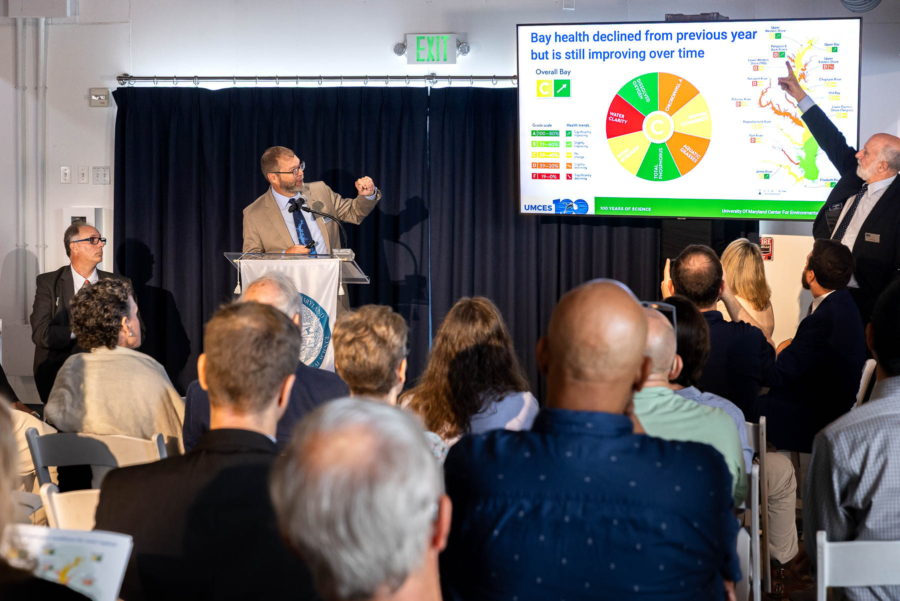Chesapeake Bay’s health declines slightly but remains on the right track over the long term
Bay’s watershed earns a C+

After a year of severe weather that included periods of prolonged drought followed by extreme rain events, the Chesapeake Bay earned a C on its annual Chesapeake Bay Report Card, declining slightly from the C+ it received last year.
Produced by the University of Maryland Center for Environmental Science (UMCES), the report card measures the health of the Bay based on seven different environmental indicators such as dissolved oxygen, water clarity and underwater grasses. UMCES also assesses the health and productivity of Bay’s watershed based on 12 ecologic, social and economic indicators.
The Chesapeake Bay’s watershed received a slightly higher grade than the estuary itself: a C+ (57%). This score is made up of indicators in three categories: Ecology, Society and Economy. The highest-scoring category was Ecology, with a B- (64%), followed by the Economy category with a C+ (55%). The lowest scoring category was Society, with a C (52%).

According to the report, 2024 was one of the hottest years on record, which can cause a decrease in the dissolved oxygen needed to support fish and plant life in the Bay. The periods of heavy rainfall swept excess nitrogen, phosphorus and sediment runoff into local waterways and eventually the Chesapeake, smothering underwater grasses and throwing off the Bay’s salinity.
“This year’s report card shows the serious challenges we face,” said Maryland Senator Chris Van Hollen. “While over the years we’ve made significant progress, it’s clear that we can’t let up for a second in our efforts to preserve the Bay.”
It is because of these environmental factors that the Bay saw a lower score in 2024 than it did the previous year. Despite a decrease in health, the Bay’s score in 2024 was higher than the long-term average taken from 1986−2024, and the Bay itself is on an upward trend. Since 1986, the highest health grade the Bay has scored is a 55% (or C+), which it earned in 2023. The 50% that the Bay earned in 2024 is higher than most years on record.
“There was a substantial upturn in the overall Bay health score in 2024, and it came down a little this year,” noted Dr. Heath Kelsey, director of UMCES’ Integration and Application Network. “Over the long-term, though, there is still an improving trend from the 1980s until now.”
On a local scale, six regions are seeing a positive long‑term trend, including the Elizabeth, James, Patapsco and Back Rivers, Upper Western Shore, Upper Bay and Lower Bay. Only the Upper Eastern Shore has a declining trend. During the Chesapeake Bay Report Card press event, UMCES announced that they have been working with groups in the Eastern Shore, such as the Delmarva Land and Litter Collaborative, to understand why the region is seeing a decrease in water conditions despite extensive restoration work.
To learn more, visit ChesapeakeBayReportCard.org.

Comments
There are no comments.
Thank you!
Your comment has been received. Before it can be published, the comment will be reviewed by our team to ensure it adheres with our rules of engagement.
Back to recent stories